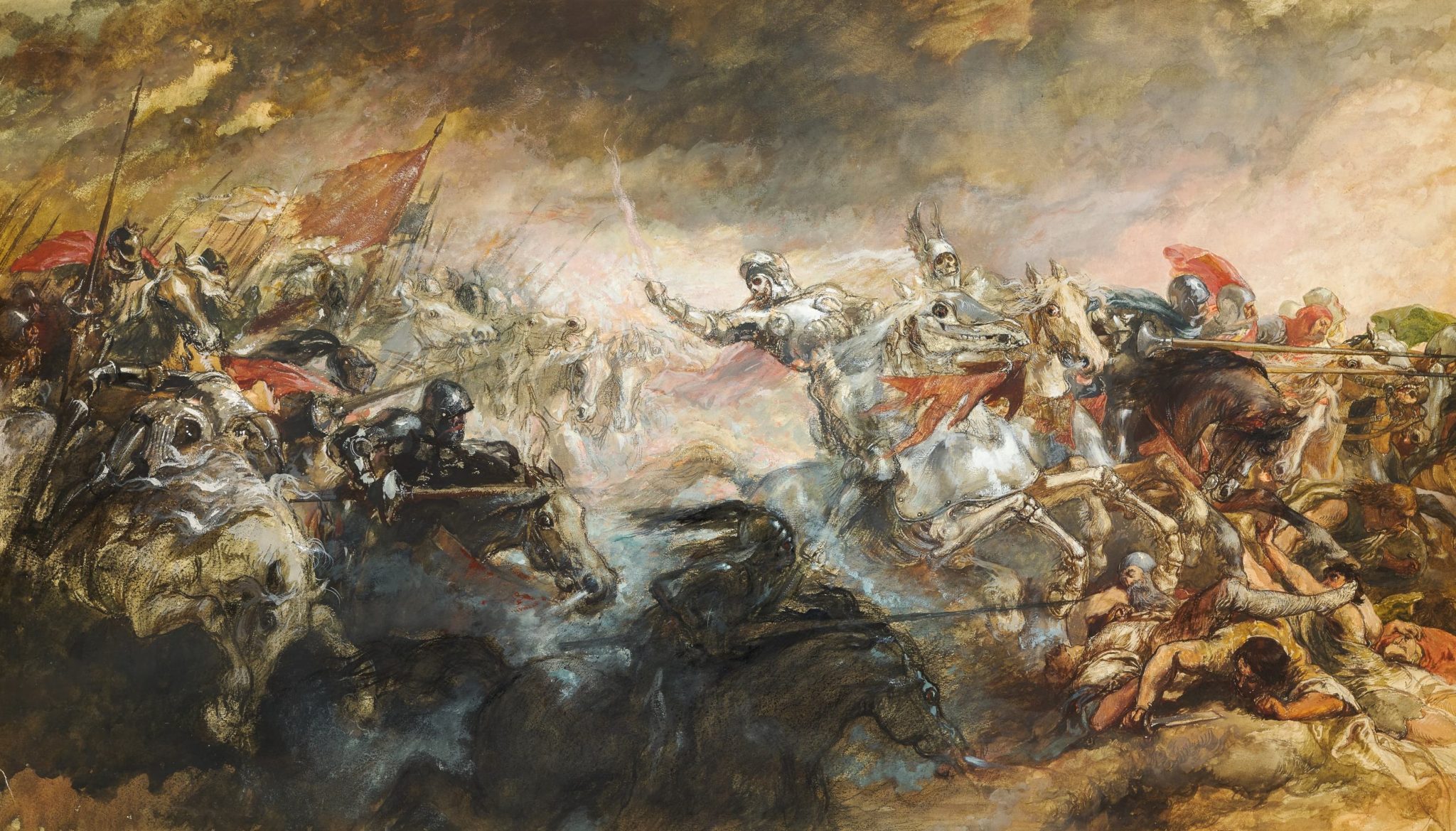Most Recent News


Popular News




Sir John Glubb developed a hypothesis that the duration of great nations usually resides around the 250 year mark. America is at year 245.
Sir john Glubb wrote “The Fate of Empires” which describes what others have called anacyclosis and the cycle of collapse. In it, Glubb describes how nations tends to rise, degrade, and eventually collapse.
Most nations follow an eerily similar timeline, regardless of time period, culture, wealth, ethnicity, or any other usual distortion-qualifier.
Numerous other historians/philosphers noted this same trend. Plato, Polybius, Aristotle, Machiavelli, etc have all described similar events within this political cycle of collapse.
One way in which Sir John Glubb differs, however, is his 250 year hypothesis:
We possess a considerable amount of information on many empires recorded in history, and of their vicissitudes and the lengths of their lives, for example:
| The nation | Dates of rise and fall | Duration in years |
| Assyria | 859-612 B.C. | 247 |
| Persia | 538-330 B.C. | 208 |
| Greece | 331-100 B.C. | 231 |
| Roman Republic | 260-27 B.C. | 233 |
| Roman Empire | 27 B.C.-A.D. 180 | 207 |
| Arab Empire | A.D. 634-880 | 246 |
| Mameluke Empire | 1250-1517 | 267 |
| Ottoman Empire | 1320-1570 | 250 |
| Spain | 1500-1750 | 250 |
| Romanov Russia | 1682-1916 | 234 |
| Britain | 1700-1950 | 250 |
This list calls for certain comments.
The present writer is exploring the facts, not trying to prove anything. The dates given are largely arbitrary. Empires do not usually begin or end on a certain date. There is normally a gradual period of expansion and then a period of decline. The resemblance in the duration of these great powers may be queried. Human affairs are subject to many chances, and it is not to be expected that they could be calculated with mathematical accuracy.
Nevertheless, it is suggested that there is sufficient resemblance between the life periods of these different empires to justify further study.
The division of Rome into two periods may be thought unwarranted. The first, or republican, period dates from the time when Rome became the mistress of Italy, and ends with the accession of Augustus. The imperial period extends from the accession of Augustus to the death of Marcus Aurelius. It is true that the empire survived nominally for more than a century after this date, but it did so in constant confusion, rebellions, civil wars and barbarian invasions.
Not all empires endured for their full life-span. The Babylonian Empire of Nebucha- dnezzar, for example, was overthrown by Cyrus, after a life duration of only some seventy-four years.
An interesting deduction from the figures seems to be that the duration of empires does not depend on the speed of travel or the nature of weapons. The Assyrians marched on foot and fought with spears and bow and arrows. The British used artillery, railways and ocean-going ships. Yet the two empires lasted for approximately the same periods. There is a tendency nowadays to say that this is the jet-age, and consequently there is nothing for us to learn from past empires. Such an attitude seems to be erroneous.
It is tempting to compare the lives of empires with those of human beings. We may choose a figure and say that the average life of a human being is seventy years. Not all human beings live exactly seventy years. Some die in infancy, others are killed in accidents in middle life, some survive to the age of eighty or ninety. Nevertheless, in spite of such exceptions, we are justified in saying that seventy years is a fair estimate of the average person’s expectation of life.
We may perhaps at this stage be allowed to draw certain conclusions:
In spite of the accidents of fortune, and the apparent circumstances of the human race at different epochs, the periods of duration of different empires at varied epochs show a remarkable similarity.
Immense changes in the technology of transport or in methods of warfare do not seem to affect the life-expectation of an empire.
The changes in the technology of trans- port and of war have, however, affected the shape of empires. The Assyrians, marching on foot, could only conquer their neigh- bours, who were accessible by land—the Medes, the Babylonians, the Persians and the Egyptians.
The British, making use of ocean-going ships, conquered many countries and sub- continents, which were accessible to them by water—North America, India, South Africa, Australia and New Zealand—but they never succeeded in conquering their neighbours, France, Germany and Spain.
But, although the shapes of the Assyrian and the British Empires were entirely different, both lasted about the same length of time.
Sir Glubb’s hypothesis is that nations, on average, last 250 years. There are obvious exceptions and this does warrant further study, but the examples are rather damning. Plus, there are plenty of other nations that would fit this timeline as well.
The interesting part is then taking a look at America:
We are obviously degrading. Rapidly. We’re also right next to the 250 year timeline.
Coincidence? Perhaps. Or maybe we’re soon to be yet another data point in favor of Sir Glubb’s theory. All of my relatively younger readers will certainly find out the answer to this question within their own lifetime.
On a more positive note, the cycle of collapse can be stopped. But we have to think outside of the current frameworks that merely help continue it.
Read Next:
The Power Cycle: When The Institutions Own The Government
The Cycle of Collapse: Fate Of Empires by Sir John Glubb
Opinion-Molding Operations Part 2
If you enjoyed this article, bookmark the website and check back often for new content. New articles most weekdays.
You can also keep up with my writing by joining my monthly newsletter.
Help fight the censorship – Share this article!

(Learn More About The Dominion Newsletter Here)
This VERY interesting. I posted the following on Facebook. A good friend responded and In reply, I ran across your article. Here is what I posted Hey folks…. I never thought that I would live to see the beginnings of the collapse of our society.
It is said that history repeats itself. I don’t think it is history so much as the repeat of human nature in its’ raw state.
Look at all the worlds’ societies that have come and gone. The Mayans, Incas Romans, Greeks, Egypt Spain, Portugal, England, Old Russia, the Cloves Indians. The Ottoman Empire and so much more. There are ancient ruins throughout the world. There are abandoned cities, building and forts – even some our shopping malls.
My point is: these events occurred over a period of time resulting in the death of the original society. If you look at the collapse it was a change in how us humans interfaced with one-another. Respect and the goal of creating a better environment for living evolved into the loss of respect and a common goal. It became more hostile to other groups and eventually to each other. In many cases, the collapse became permeant, in others it created another version such as England, or Roam / Italy, or Greece.
I am sad to see all the events that have taken place over these past years. If you notice, no real improvement has been made. Oh – the government has passed law and such but the continued decline has continued. You can’t dictate to our human nature – that only creates more rebellion. You can’t video or media that “People Should”. People act as people and respond as people. Without a common ethic – people will react in a raw state- almost like a Rabid Dog.
When did this begin…. That I’ve been trying figure out. It started small and has escalated to what we are seeing today. I believe this change had already started but escalated when our society lost its faith – not one particular religion but all religious beliefs.
Our government can’t even be civil anymore. Name calling, pathological lying – now accepted and approved, and attacking one-another instead of trying to better the peoples living. Destruction of our cities, to the point, as in Portland Or., business that have been around for decades have either moved out of closed. Boarded up windows, trash – including shit, laying all over. Now we are seeing senseless killings including from our so called law enforcement. And it is not only our society, we are seeing major changes in other world societies. At what point will it climax… again who knows. War of some sort – maybe. Even a civil war (again) – maybe. Dictatorship – maybe.